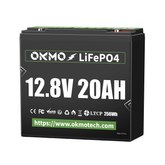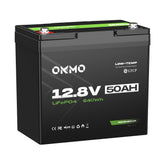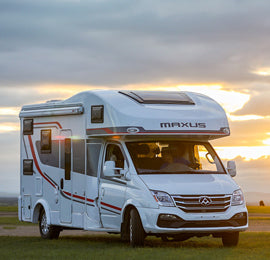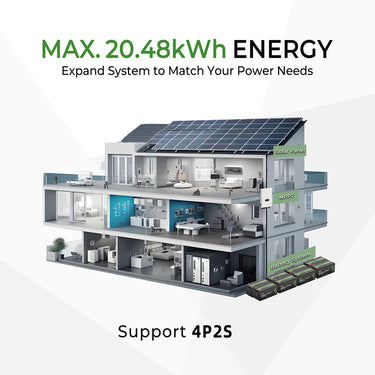What Is the Difference Between a Deep Cycle Battery and a Regular Battery?
When it comes to powering a trolling motor, the choice of battery can significantly impact your experience on the water. Two common types of batteries often considered are deep cycle batteries and regular (starter) batteries. While they may appear similar, their design, performance, and intended use vary greatly. Understanding these differences can help you make an informed decision and ensure that your trolling motor battery operates efficiently and reliably.
1. Purpose and Design
The primary difference between a deep cycle battery and a regular battery lies in their purpose and internal design.
-
Deep Cycle Batteries: These batteries are engineered to provide a steady and reliable flow of power over an extended period. They are specifically designed to handle frequent deep discharges (up to 80% or more of their capacity) without significant degradation. This makes them ideal for applications like trolling motors, RVs, and solar energy systems, where long-term, consistent power is required.
-
Regular Batteries: Also known as starter batteries, these are built to deliver a short burst of high power to start engines, such as those in cars or boats. They are not designed to be deeply discharged regularly, as this can lead to premature failure.

2. Discharge and Performance
The performance of a battery in terms of discharge is crucial for trolling motor users.
-
Deep Cycle Batteries: These batteries excel at providing sustained power for hours, allowing you to enjoy uninterrupted use of your trolling motor. They are designed for deep discharge cycles and can endure repeated charging and discharging without losing significant capacity. Their cycle life is typically much longer than regular batteries, often ranging from 1,000 to 3,000 cycles depending on the type.
-
Regular Batteries: These batteries are optimized for high current output over a short duration. They are suitable for starting engines but struggle with prolonged use and deep discharges. Overdrawing power from a regular battery can cause internal damage, reducing its lifespan and reliability.
3. Construction and Durability
The internal construction of these batteries reflects their intended use.
-
Deep Cycle Batteries: With thicker lead plates and more robust active materials, deep cycle batteries are built to handle the stress of deep discharges and extended use. This construction enhances their durability and makes them better suited for demanding applications like trolling motors.
-
Regular Batteries: These batteries have thinner plates and are designed for quick energy delivery rather than sustained performance. As a result, they are less durable when subjected to the demands of trolling motor operation.
4. Longevity and Cost-Effectiveness
When considering the long-term cost, deep cycle batteries offer superior value.
-
Deep Cycle Batteries: Although they come with a higher upfront cost, their ability to endure frequent deep discharges and their longer lifespan make them more cost-effective in the long run. Modern lithium-based deep cycle batteries, such as LiFePO4, offer even greater durability and longevity, often lasting several years of intensive use.
-
Regular Batteries: These are less expensive initially but tend to have a shorter lifespan, especially if used inappropriately for deep discharge applications. Frequent replacement can make them a more expensive option over time.

5. Applications
Choosing the right battery for the right application is essential.
-
Deep Cycle Batteries: Perfect for trolling motors, RVs, solar power systems, and backup power supplies. Their ability to deliver consistent power over time makes them indispensable for applications requiring reliability and endurance.
-
Regular Batteries: Ideal for starting engines and powering devices that require short bursts of high energy. They are not suitable for prolonged or repetitive discharge scenarios.
The Superiority of Deep Cycle Batteries
Given their ability to handle deep discharges, provide consistent power, and last longer, deep cycle batteries are the superior choice for trolling motor applications. Their robust design and long-term reliability ensure that you can enjoy uninterrupted adventures on the water without worrying about battery performance.
To further enhance your experience, consider the OKMO deep cycle battery. With a cycle life of 15,000+ cycles, the OKMO battery represents a breakthrough in battery technology. Its advanced LiFePO4 chemistry ensures unparalleled durability, lightweight construction, and exceptional energy density. Compared to traditional lead-acid deep cycle batteries, OKMO offers a significantly longer lifespan and superior performance, making it the ideal choice for serious anglers and boating enthusiasts.

Why Choose OKMO?
-
Unmatched Longevity: With over 15,000 cycles, OKMO batteries last decades, far surpassing the lifespan of regular deep cycle batteries.
-
Lightweight and Compact: Easy to transport and install, OKMO batteries won’t weigh your boat down.
-
Consistent Power Output: Delivers stable power for hours, ensuring your trolling motor performs at its best.
-
Eco-Friendly: Made with LiFePO4 technology, OKMO batteries are safer for the environment and free of toxic chemicals.
-
Cost-Effective: Despite a higher initial investment, the long lifespan and reliability of OKMO batteries make them the most economical choice over time.
When it comes to powering your trolling motor, the choice is clear: deep cycle batteries are the superior option for their ability to deliver reliable, long-lasting power. Among deep cycle batteries, OKMO stands out with its groundbreaking 15,000+ cycle life, lightweight design, and exceptional performance. Investing in an OKMO battery ensures that you’ll have a dependable and efficient power source for years to come, allowing you to focus on enjoying your time on the water.









